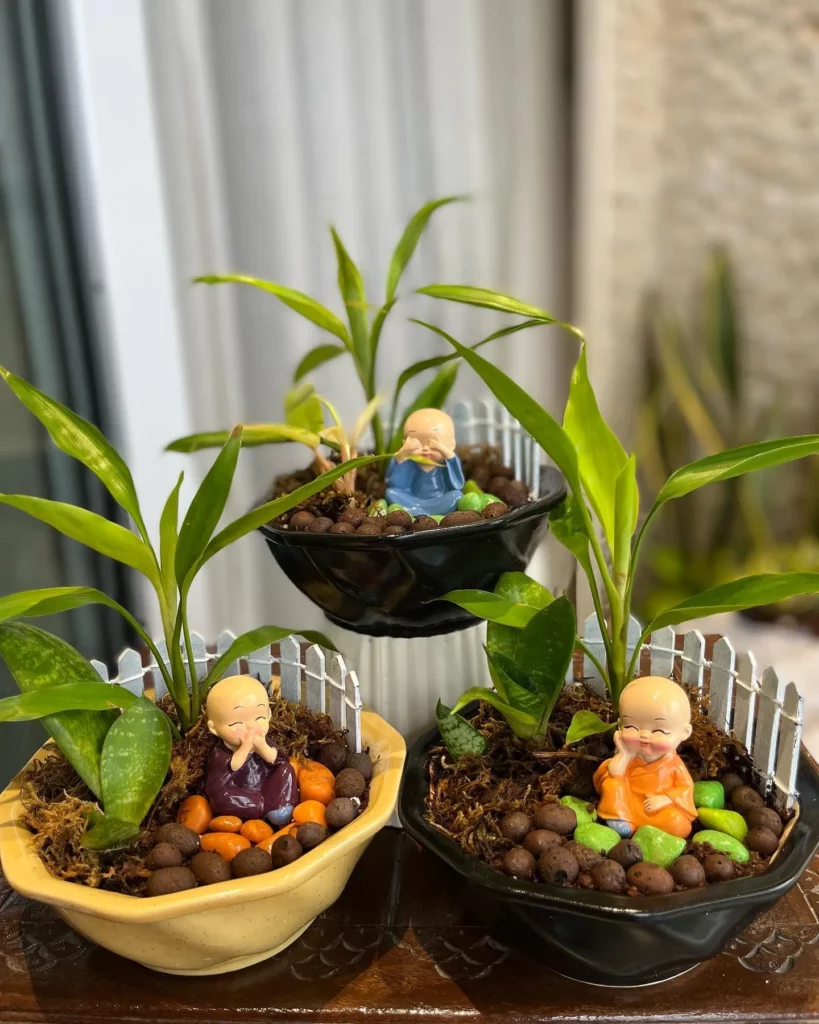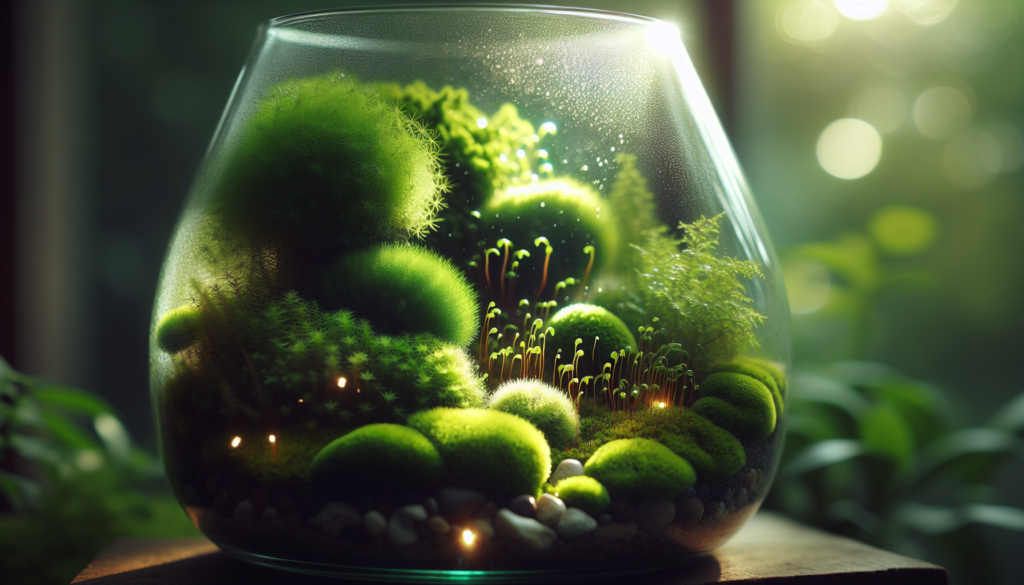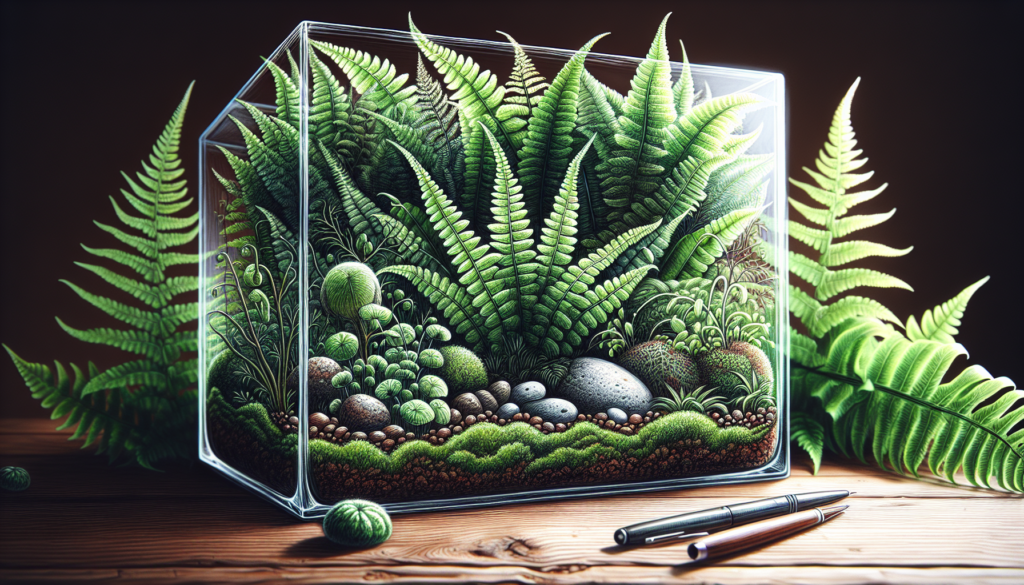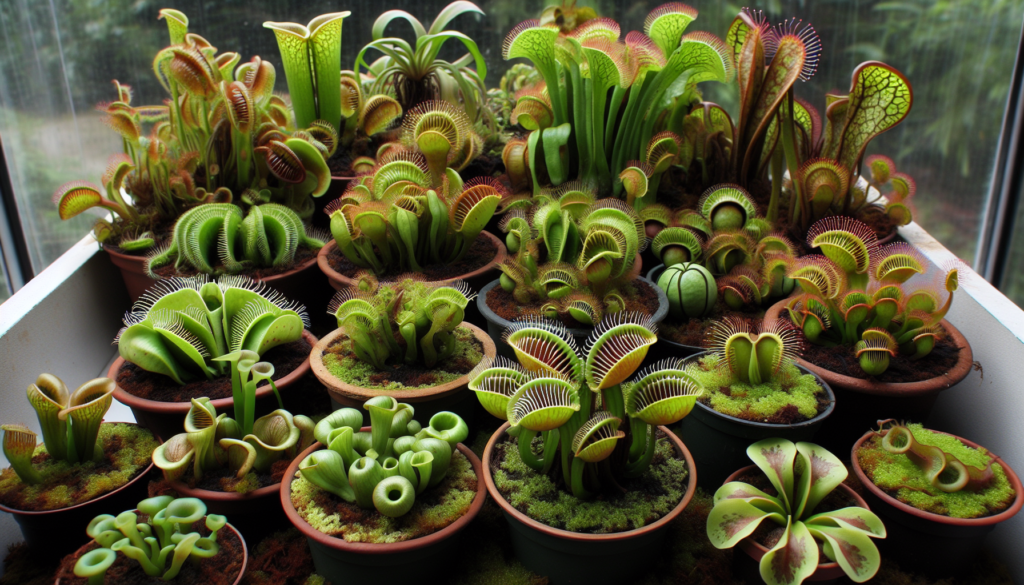Golden bamboo, scientifically known as Phyllostachys aurea, is characterized by its vibrant appearance. It features upright canes that start as bright green and gradually turn a beautiful golden hue with age and exposure to sunlight. The canes are adorned with narrow, lance-shaped leaves, which grow in clusters on short stems. This unique combination of golden canes and lush foliage adds an elegant touch to any space.
Appearance of Bamboo
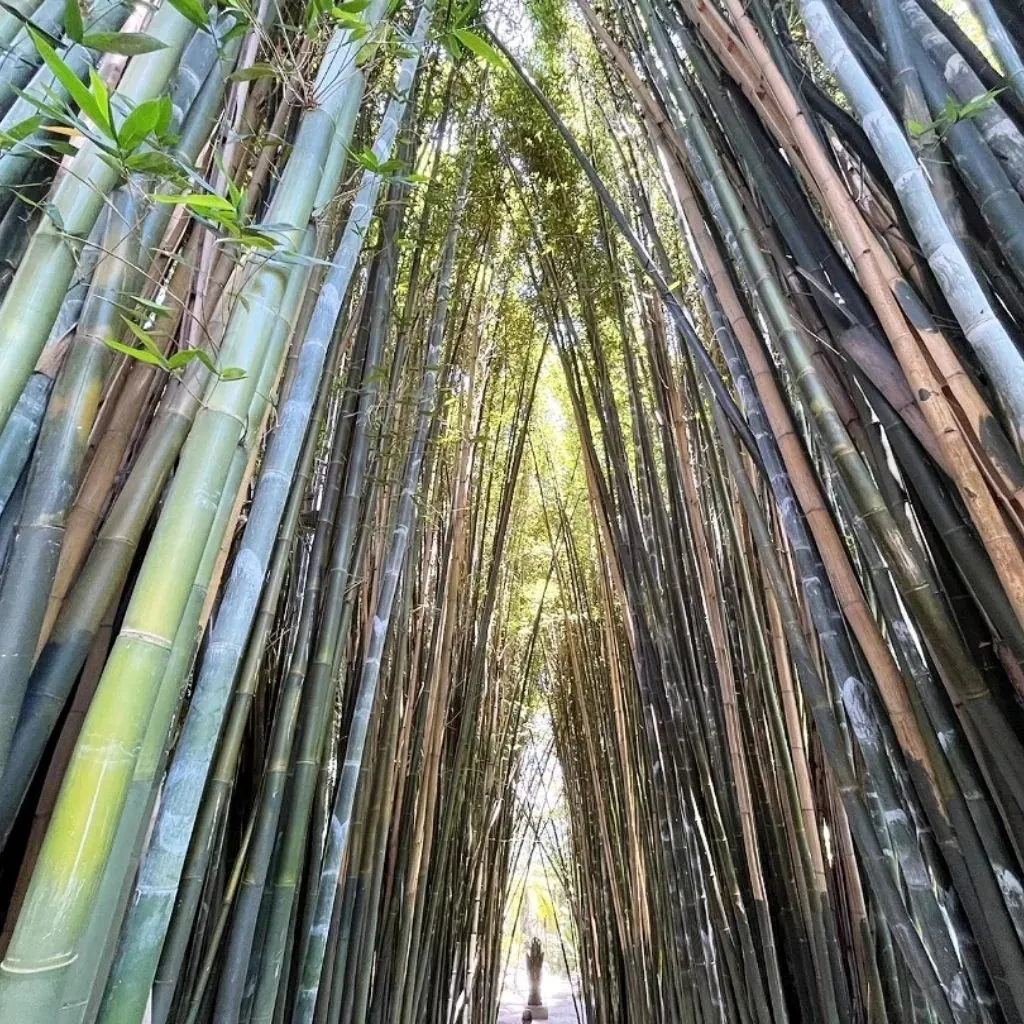
Golden bamboo is classified as a perennial grass, belonging to the rhizome type. It is also known by other common names such as fishpole bamboo, monk’s belly bamboo, and fairyland bamboo. With its striking appearance, Phyllostachys aurea is a popular choice for adding visual interest and a touch of nature to both indoor and outdoor settings.
- Bright green canes turning golden with age and sunlight
- Narrow, lance-shaped leaves growing in clusters
- Perennial grass type belonging to the rhizome category
- Other popular names: fishpole bamboo, monk’s belly bamboo, fairyland bamboo
Light Requirements for Bamboo
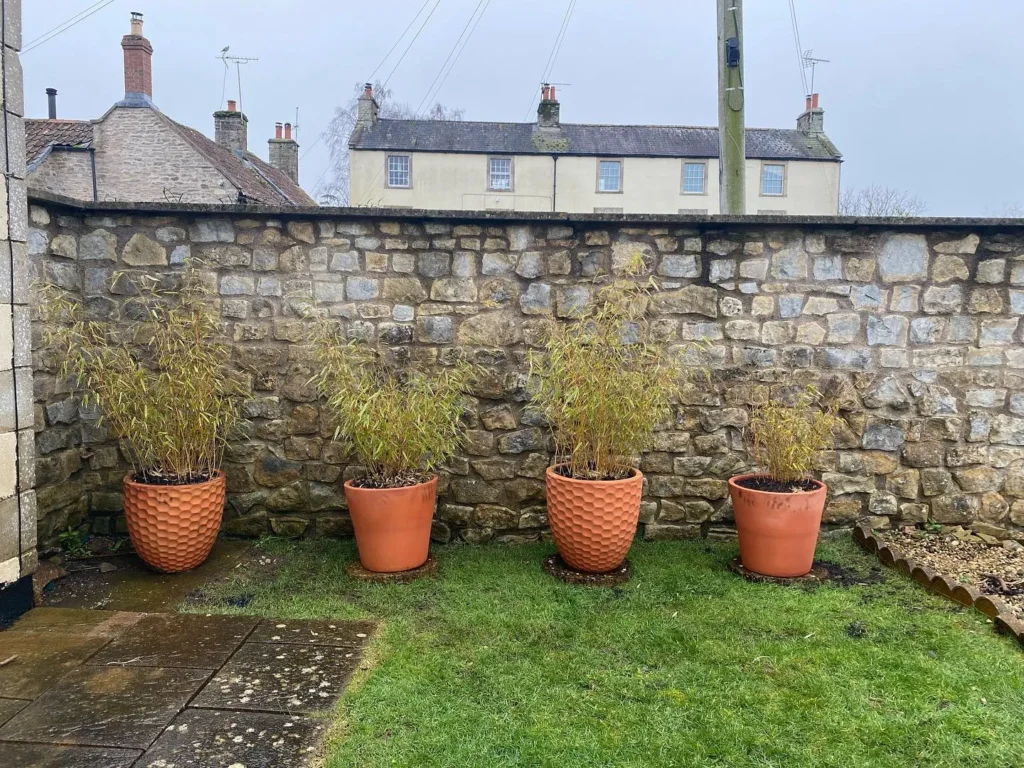
Bamboo, whether grown indoors or outdoors, requires an adequate amount of light to thrive and maintain its health. Understanding the light requirements for indoor bamboo is crucial for successful cultivation.
When it comes to indoor bamboo, it needs a minimum of 6 hours of bright, indirect natural light every day to support healthy growth. Placing your bamboo plant in the sunniest window available in your home is the best way to ensure it receives the necessary light.
In lower light conditions, bamboo may experience slower growth and can become weak and leggy. To avoid this, it’s important to rotate the plant regularly to ensure all sides are exposed to adequate light. This will help promote balanced and even growth.
Varieties Suitable for Lower Light Conditions
While most bamboo varieties prefer bright, indirect light, there are certain species that can tolerate lower light conditions indoors. Two common examples include:
- Pleioblastus viridistriatus: This bamboo variety displays vibrant yellow and green variegated leaves, making it an attractive addition to any indoor space. It can tolerate lower light conditions and is well-suited for growing indoors.
- Pseudosasa japonica: Also known as arrow bamboo, Pseudosasa japonica is a shade-loving bamboo that thrives in areas with less light. It features dense green foliage and can be successfully grown as an indoor plant.
These bamboo varieties offer the opportunity to enjoy the beauty and benefits of bamboo even in spaces with limited natural light.
Watering Bamboo Indoors

Proper watering is crucial for the successful growth of bamboo plants indoors. Maintaining the right soil moisture level is essential to keep your bamboo healthy and thriving.
- Keep the soil evenly moist: Bamboo thrives in consistently moist soil. Check the moisture level regularly by feeling the top 2-3 inches of soil. If it feels dry to the touch, it’s time to water your bamboo plant. Avoid letting the soil dry out completely, but be cautious not to overwater and make the soil soggy.
- Water from the bottom: When watering your indoor bamboo, it’s best to water from the bottom. Fill a tray or saucer with water and place the pot on top, allowing the plant to absorb the water through the drainage holes. This approach helps prevent waterlogging and ensures that the roots receive adequate moisture.
- Drain excess water: After watering, make sure to drain any excess water that accumulates in the tray or saucer. Bamboo plants should not sit in standing water, as it can lead to root rot. Empty the tray or saucer promptly to maintain proper soil moisture.
In the winter months, slightly reduce the frequency of watering to account for reduced plant growth. It’s important to strike a balance to prevent both underwatering and overwatering.
Fertilizing Bamboo Indoors
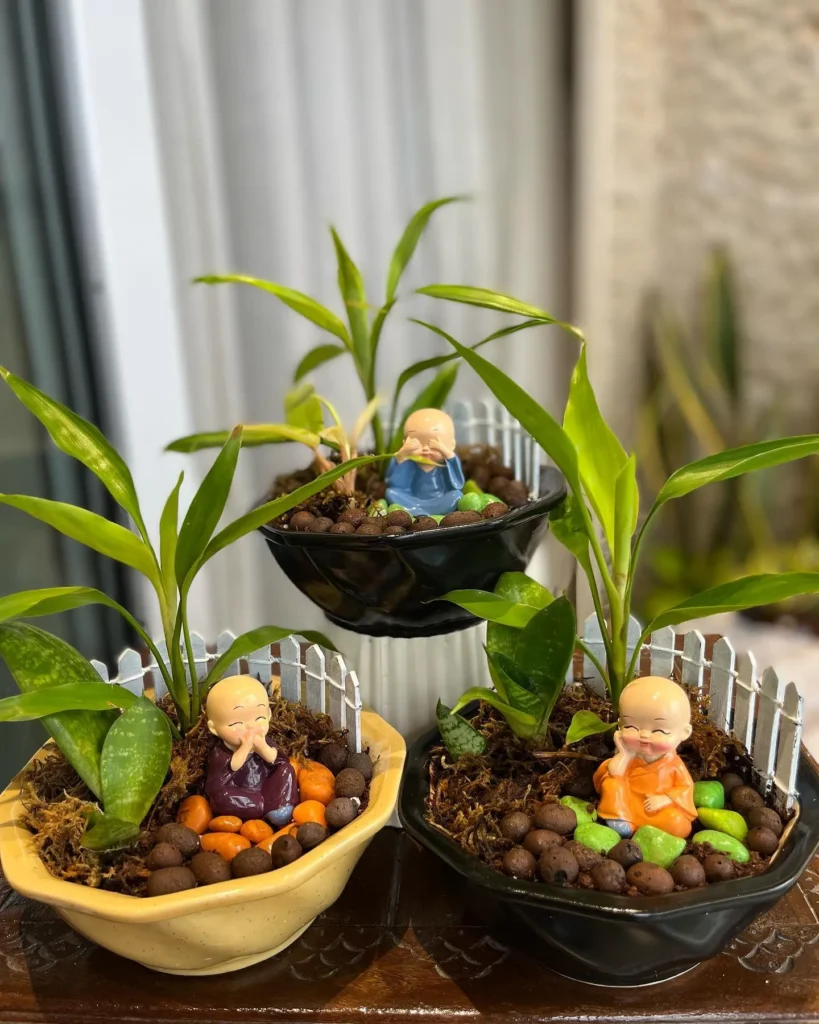
Bamboo indoors requires regular feeding to maintain optimal nutrient levels in the soil. Providing the right nutrients through fertilization is essential for promoting healthy growth and vibrant foliage.
Balanced Liquid Fertilizer
A balanced liquid fertilizer is highly recommended for fertilizing bamboo indoors. Choose a fertilizer specifically designed for bamboo or other houseplants, and follow the label instructions for application rates and frequency.
Application Frequency
It is generally recommended to fertilize indoor bamboo once a month during the growing season. This helps to ensure a consistent supply of nutrients for the plant’s needs.
Incorporating Organic Compost
In addition to using a balanced liquid fertilizer, incorporating organic compost into the soil can also benefit indoor bamboo. Adding compost in the spring provides a slow-release source of nutrients, promoting healthy growth throughout the year.
Pruning Needs
Bamboo generally does not require pruning indoors. However, if any old canes become unsightly or overcrowded, they can be removed at their base to maintain the plant’s appearance.
Potting Bamboo Indoors
When it comes to potting bamboo indoors, choosing the right container is crucial for the plant’s health and longevity. Here are some important considerations:
- Container Material: Opt for a metal or hardwood container, as bamboo has a tendency to break through plastic or terra-cotta pots.
- Drainage Holes: Ensure that the container has ample drainage holes to prevent waterlogging, which can lead to root rot.
- Pot Weight: Select a heavy pot that can effectively anchor the weight of the bamboo canes, preventing toppling or tipping over.
- Pot Size: It’s recommended to start with a 10-gallon container to provide ample space for the bamboo to grow. However, as the plant matures, a larger pot may be necessary to accommodate its increasing size.
- Soil: Bamboo thrives in organically rich soil with good drainage. Consider using a commercial potting mix or a mixture of peat moss and perlite to create a suitable growing medium.
Propagating Bamboo Indoors
Indoor bamboo propagation is a fantastic way to expand your bamboo collection or share this beautiful plant with others. With the right technique, you can easily propagate bamboo from cuttings and enjoy the satisfaction of watching new plants grow.
To propagate bamboo indoors, you will need a sterile cutting shear and a healthy bamboo plant to take cuttings from. Select a stem that has at least one leaf joint and make a clean cut just below the joint. This joint will eventually develop into the roots of the new plant.
After taking the cutting, gently trim off the leaves on the lower portion of the stem, exposing the growth nodes. These nodes are essential for root formation.
Place the cutting in a container filled with distilled water, ensuring that the cut end is submerged. It’s crucial to use distilled water to prevent any chemical contamination that could hinder root development.
Now, it’s time to wait patiently. Roots should start to emerge within approximately 30 days. During this period, make sure to monitor the water level and change it if necessary to maintain the quality and cleanliness of the water.
Once the roots are established, you can choose to transfer the cutting to a decorative vase filled with water and pebbles for a minimalist aesthetic or plant it in a pot with well-draining soil. Whichever option you prefer, make sure to provide adequate sunlight and water to support the growth of your newly propagated bamboo plant.
Growth and Development of Bamboo Indoors
Bamboo grown indoors can be a beautiful addition to any space, but it’s important to understand that it may not reach its maximum height and diameter potential compared to outdoor bamboo. However, with proper care and management, you can still enjoy the lush greenery and unique charm that bamboo brings.
When selecting a bamboo plant for indoor growing, it’s crucial to choose a size that fits well within your desired space. Bamboo can become quite large in outdoor environments, but indoors, it’s best to choose a cultivar or species that stays compact and manageable. This will help prevent your bamboo from outgrowing its container or overpowering your indoor space.
If you want to encourage more vigorous growth, you can consider moving your bamboo outdoors during the warmer months. However, it’s essential to acclimate the plant gradually to outdoor conditions to avoid causing stress. Start by placing the bamboo in a slightly shaded outdoor area and gradually increase its exposure to sunlight over time.
Managing the growth of bamboo indoors also involves creating the right environment for the plant to thrive. Bamboo prefers room temperatures between 60 and 80 degrees Fahrenheit (15 to 27 degrees Celsius) and a humidity level of around 50%. Maintaining these optimal conditions will support healthy growth and prevent the plant from experiencing any adverse effects.
Pests and Diseases of Bamboo
Bamboo plants grown indoors may encounter various pests and diseases that can affect their health and appearance.
Common Pests:
- Mealybugs: These small, white, cotton-like insects feed on the sap of bamboo plants, causing stunted growth and yellowing leaves.
- Aphids: These tiny insects gather in large numbers and suck the sap from bamboo leaves, resulting in distorted growth and curled leaves.
- Spider Mites: These microscopic pests create fine webs on the leaves of bamboo plants and cause yellow or brown speckles, leading to leaf drop.
Treatments:
To control and eliminate these pests, you can use sprays specifically designed for indoor plants or create a mild solution of liquid dish soap and water. Apply the spray or gently wash the affected areas with the soap solution, ensuring thorough coverage. Repeat the treatment every few days until the pests are eradicated.
Common Issues:
- Yellowing Leaves: This can be a sign of excessive sunlight or high salinity in tap water. Adjust the plant’s exposure to light and consider using filtered or distilled water instead.
- Brown Leaves: Dry air or polluted water can cause the leaves to turn brown. Increase humidity levels around the plant and use clean, non-chlorinated water for irrigation.
Care Guide for Lucky Bamboo
Lucky bamboo (Dracaena sanderiana) is a popular houseplant known for its unique stalk shapes and association with good feng shui. Although it is often referred to as bamboo, it is actually a succulent plant. If you’re interested in growing lucky bamboo indoors, here are some care tips to keep in mind:
Light Requirements
Lucky bamboo prefers bright, filtered sunlight. Avoid placing it in direct sunlight, as this can scorch the leaves. Ideally, keep your lucky bamboo in a location with indirect light to ensure its proper growth.
Growing Medium
Lucky bamboo can be grown in either potting soil or water. If you choose to grow it in water, make sure there is at least an inch of standing water to provide the necessary moisture. If growing in soil, use well-draining potting soil to prevent root rot.
Watering
When growing lucky bamboo in water, make sure to use distilled or filtered water. This is because the plant is sensitive to chlorine and chemicals typically found in tap water. Change the water every one to two weeks to prevent the growth of algae.
Fertilizing
Feed your lucky bamboo with a weak liquid fertilizer every other month. Dilute the fertilizer according to the package instructions to avoid overfeeding, which can harm the plant. Fertilizing helps provide essential nutrients for healthy growth.
Tips and Reminders
- Keep your lucky bamboo away from drafts and extreme temperature fluctuations.
- Ensure that the humidity level around the plant remains ideally around 50%.
- Wipe the leaves gently with a damp cloth to remove dust and keep them clean.
- Trim any yellow or brown leaves to maintain the plant’s appearance.
Propagating Lucky Bamboo
Lucky bamboo, a popular indoor plant known for its association with good luck and positive energy, can easily be propagated to grow new plants. Propagating lucky bamboo is a great way to expand your collection or share this wonderful plant with friends and family. Here’s a simple step-by-step guide on propagating lucky bamboo from stem cuttings:
- Select a healthy stem: Choose a stem with at least one leaf joint from an established lucky bamboo plant. Make sure the stem is long enough to allow for rooting.
- Prepare a container: Fill a container with distilled water, ensuring that it is deep enough to submerge the stem cutting. Distilled water is recommended as it doesn’t contain any harmful chemicals or minerals that may affect the growth of the new plant.
- Place the stem cutting: Gently place the stem cutting in the container, making sure that the leaf joint is submerged in the water. The leaf joint is where the new roots will emerge.
- Provide adequate light and temperature: Place the container in an area with bright, indirect sunlight. Lucky bamboo thrives in temperatures ranging from 65 to 90 degrees Fahrenheit (18 to 32 degrees Celsius). Avoid exposing the cutting to direct sunlight as it may cause the leaves to burn.
- Monitor root development: Roots should start to develop within around 30 days. Keep an eye on the cutting to ensure that roots are forming. Once the roots are established, it’s time to transfer the cutting to its new growing medium.
- Transfer to a new container: You can choose to transfer the cutting to a decorative vase with water and pebbles, keeping the roots submerged, or plant it in a pot with well-draining soil. If you opt for soil, use a mix suitable for houseplants or create a blend of peat moss and perlite.
- Maintain proper care: After transferring the rooted cutting, continue providing it with the right amount of light, water, and fertilization. Lucky bamboo prefers bright, filtered sunlight and well-draining soil or water. Keep the soil or water slightly moist, avoiding excessive watering that can lead to root rot. A weak liquid fertilizer can be applied every other month to supplement the plant’s nutrient needs.
- Observe growth and enjoy: With proper care, your newly propagated lucky bamboo plant will begin to grow and flourish. Keep an eye on its development and enjoy the beauty and positive energy it brings to your indoor space.
Troubleshooting Lucky Bamboo
Lucky bamboo can encounter several common issues that may affect its overall health and appearance. By understanding and addressing these problems, you can ensure your lucky bamboo thrives in its indoor environment.
Browning or yellowing leaves are frequently seen in lucky bamboo plants. This can be caused by exposure to excessive sunlight or poor water quality. To resolve this, consider moving your plant to a location with indirect light and use clean, filtered water. Adjusting the light levels and water quality will help prevent further leaf discoloration.
Black roots, algae growth in the water, and rotting or mushy stalks are also common problems faced by lucky bamboo owners. These issues typically arise due to the presence of chlorine or chemicals in the water, dry air, or poor water quality. To resolve these issues, use distilled or filtered water that is free from chlorine and chemicals. Additionally, maintain proper humidity levels by misting the leaves or placing the plant on a humidity tray.
By addressing the common issues faced by lucky bamboo, such as browning leaves, black roots, algae growth, and rotting stalks, you can promote the healthy growth and longevity of your plant. Remember to adjust the light levels, provide clean water, and maintain proper humidity for optimal results.
FAQ
Q: Can bamboo be grown indoors?
A: Yes, bamboo, specifically golden bamboo (Phyllostachys aurea), can be grown indoors successfully with proper care and specific conditions.
Q: Is lucky bamboo the same as regular bamboo?
A: No, lucky bamboo (Dracaena species) is not a true bamboo plant and cannot be grown in the same conditions as bamboo.
Q: What does golden bamboo look like?
A: Golden bamboo has bright green canes that turn golden with age and sunlight. It has narrow, lance-shaped leaves growing in clusters on short stems from the canes.
Q: What are some common names for bamboo?
A: Some common names for bamboo include fishpole bamboo, monk’s belly bamboo, and fairyland bamboo.
Q: How much light does bamboo need indoors?
A: Bamboo needs at least 6 hours of bright, indirect natural light to thrive indoors. It is best to place bamboo in the sunniest window available.
Q: How often should I water bamboo indoors?
A: Water bamboo whenever the top 2-3 inches of soil feel dry, allowing the excess water to drain out from the bottom of the pot. In winter, slightly reduce the amount of watering.
Q: How often should I fertilize bamboo indoors?
A: Bamboo indoors requires regular feeding. Apply a balanced liquid fertilizer once a month, following the label instructions. Incorporating organic compost in the spring can also promote healthy growth.
Q: What kind of container should I use for potting bamboo indoors?
A: Choose a metal or hardwood container with ample drainage holes to prevent waterlogging. A heavy pot is recommended to anchor the weight of the bamboo canes. A commercial potting mix or a mixture of peat moss and perlite is suitable for the soil.
Q: How can I propagate bamboo indoors?
A: Bamboo can be propagated indoors through stem cuttings. Take a sterile cutting shear, trim the leaves to expose the growth nodes, and place the cutting in a container filled with distilled water. Roots should emerge within 30 days.
Q: Will bamboo reach its maximum height when grown indoors?
A: Bamboo grown indoors will generally not reach its maximum height and diameter potential. It is important to select a plant size that fits well in the desired space.
Q: What pests and diseases should I watch out for when growing bamboo indoors?
A: Bamboo indoors can be susceptible to insect pests such as mealybugs, aphids, and spider mites. Treatments include using sprays or washing the plant with mild liquid dish soap and water. Yellowing or brown leaves may indicate sunlight or water issues.
Q: What is lucky bamboo and how do I care for it?
A: Lucky bamboo (Dracaena sanderiana) is a popular houseplant known for its unique stalk shapes. It prefers bright, filtered sunlight and should be watered with distilled or filtered water. Fertilize with a weak liquid fertilizer every other month.
Q: How can I propagate lucky bamboo?
A:Lucky bamboo can be propagated using stem cuttings. Remove a stem with at least one leaf joint and place it in a container filled with distilled water. Roots should develop within 30 days.
Q: What are some common issues with lucky bamboo?
A: Common issues with lucky bamboo include browning or yellowing leaves, black roots, algae growth in the water, or rotting stalks. These problems can be caused by factors such as water quality or excessive sunlight, and can be addressed by adjusting care practices.

